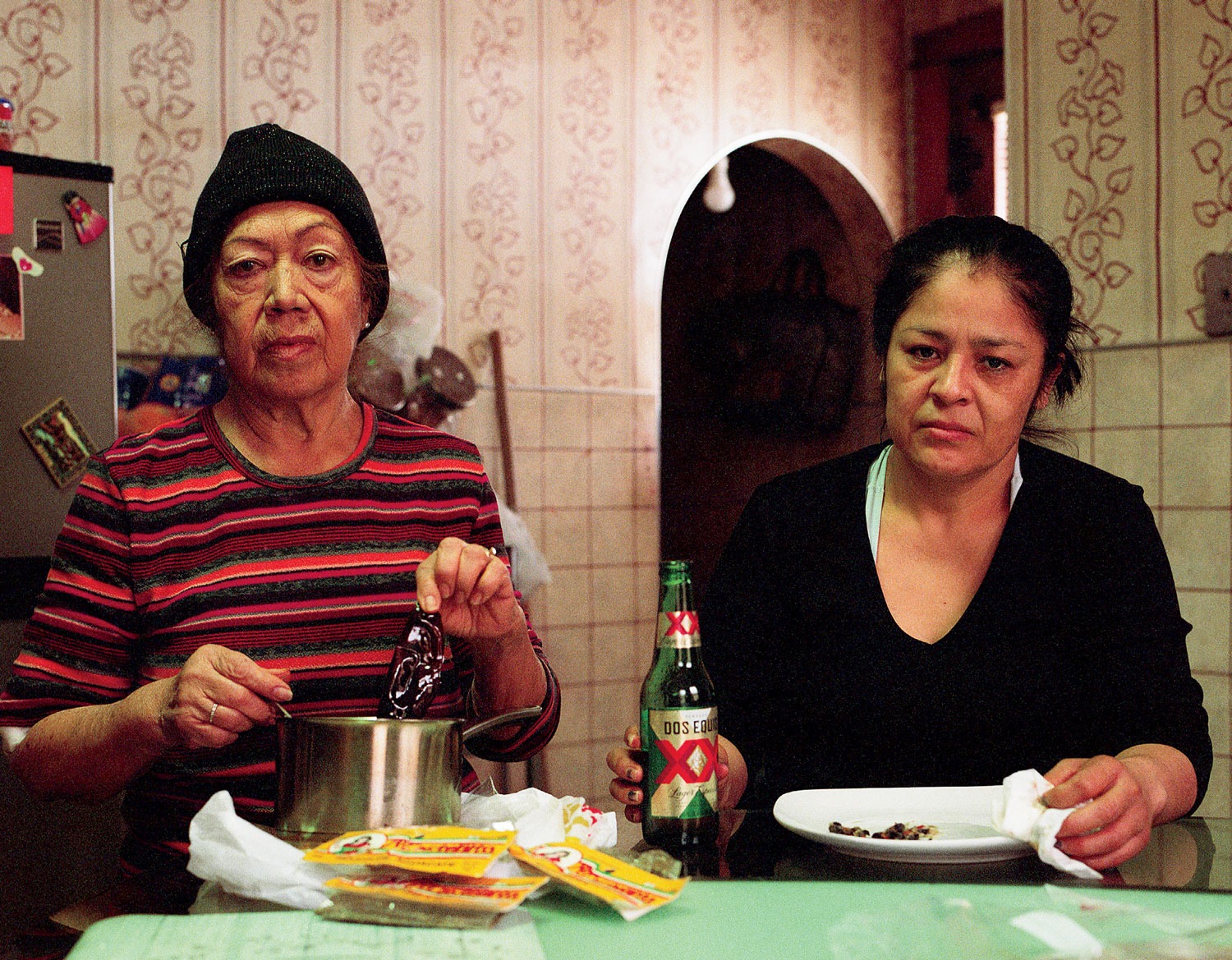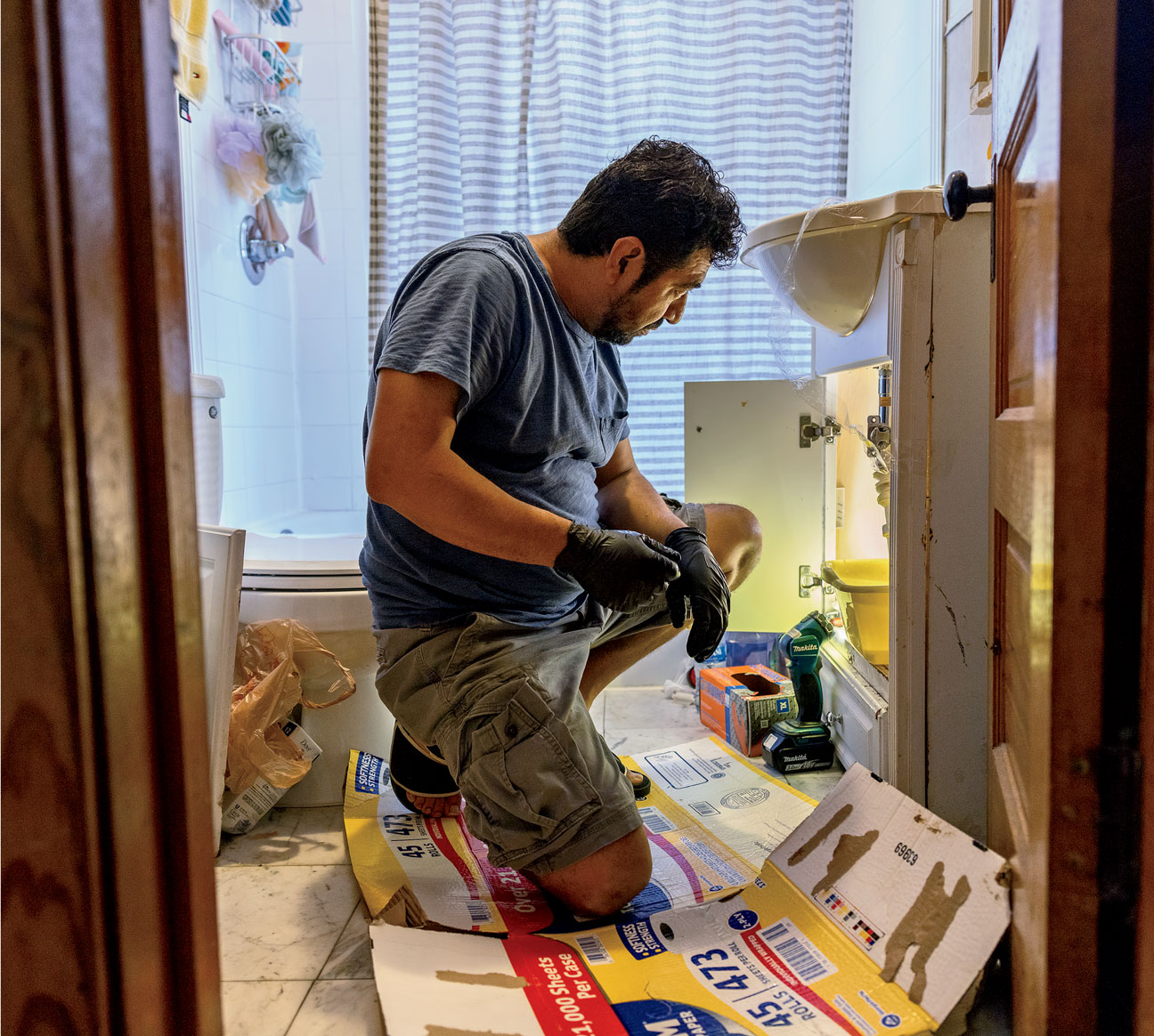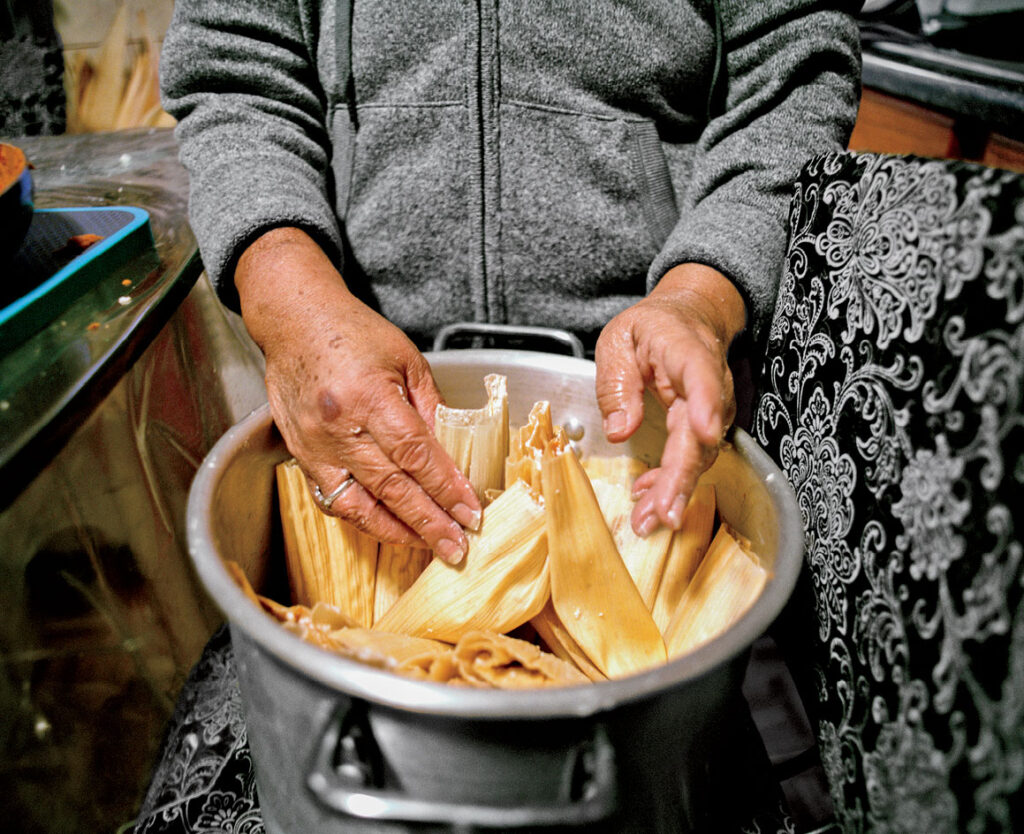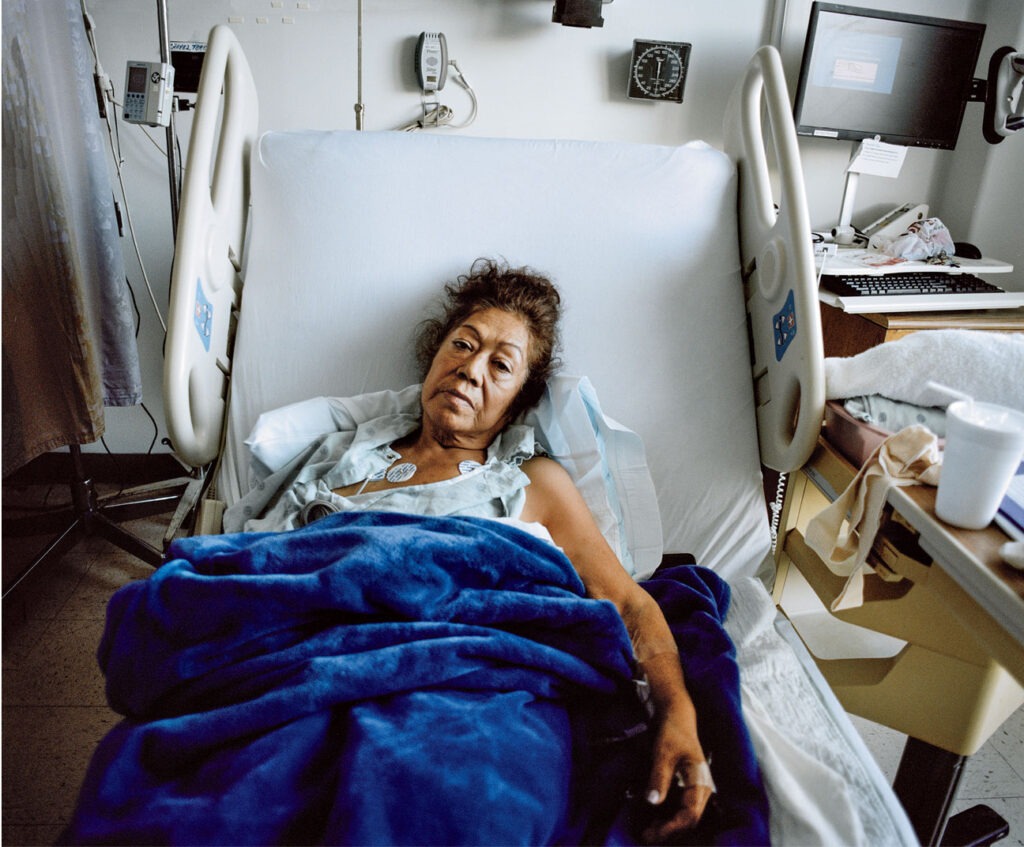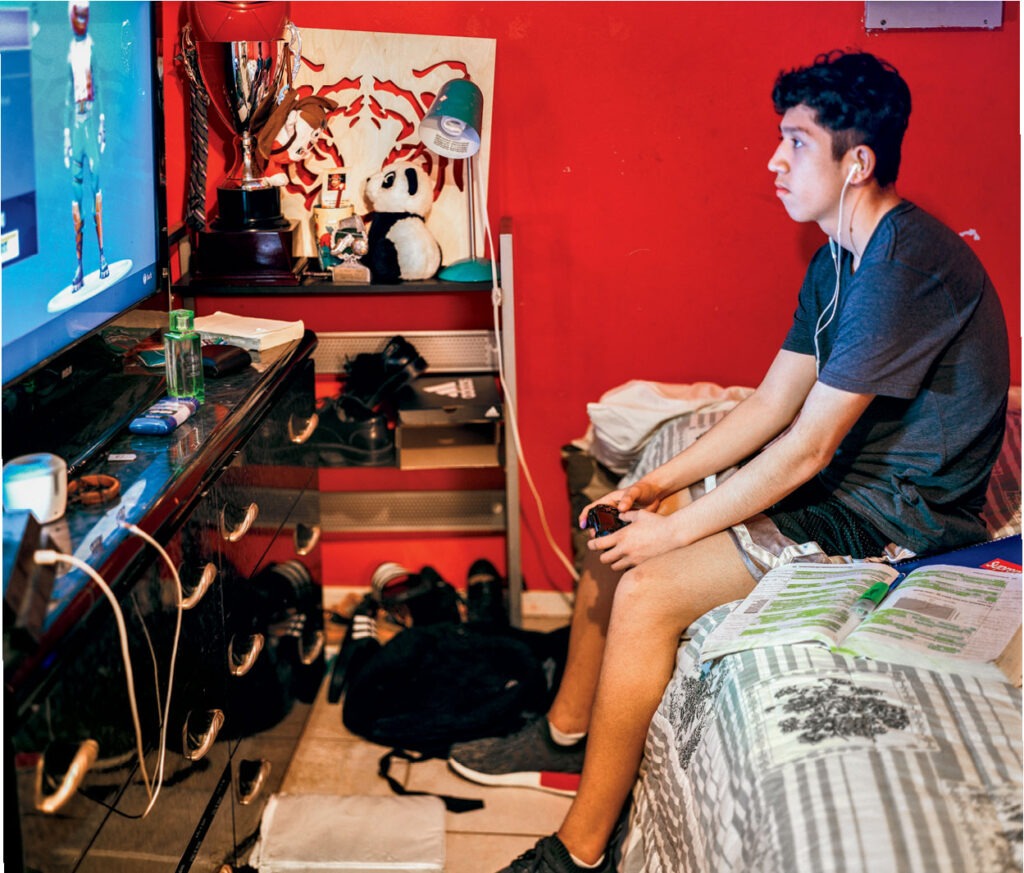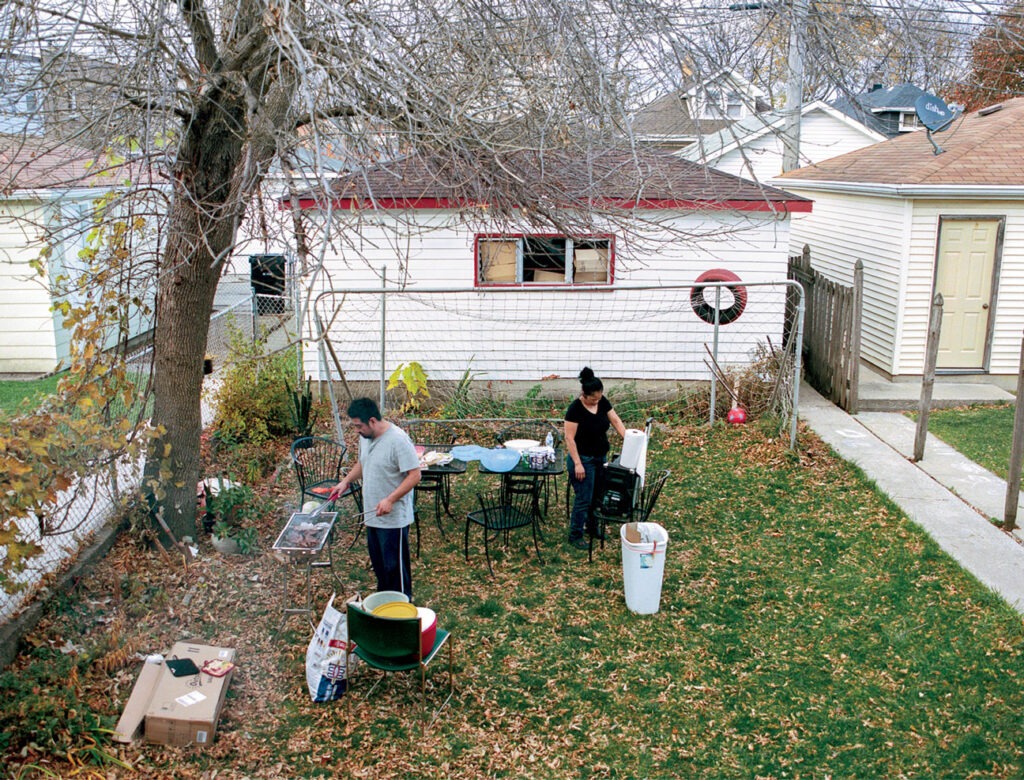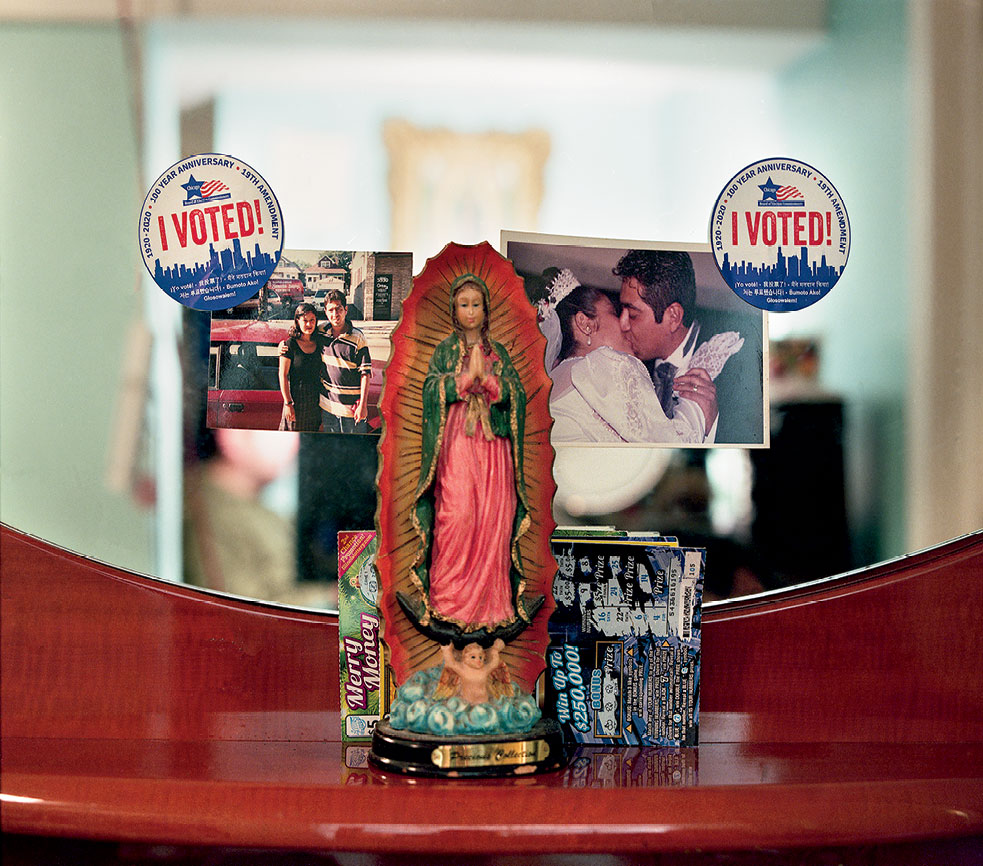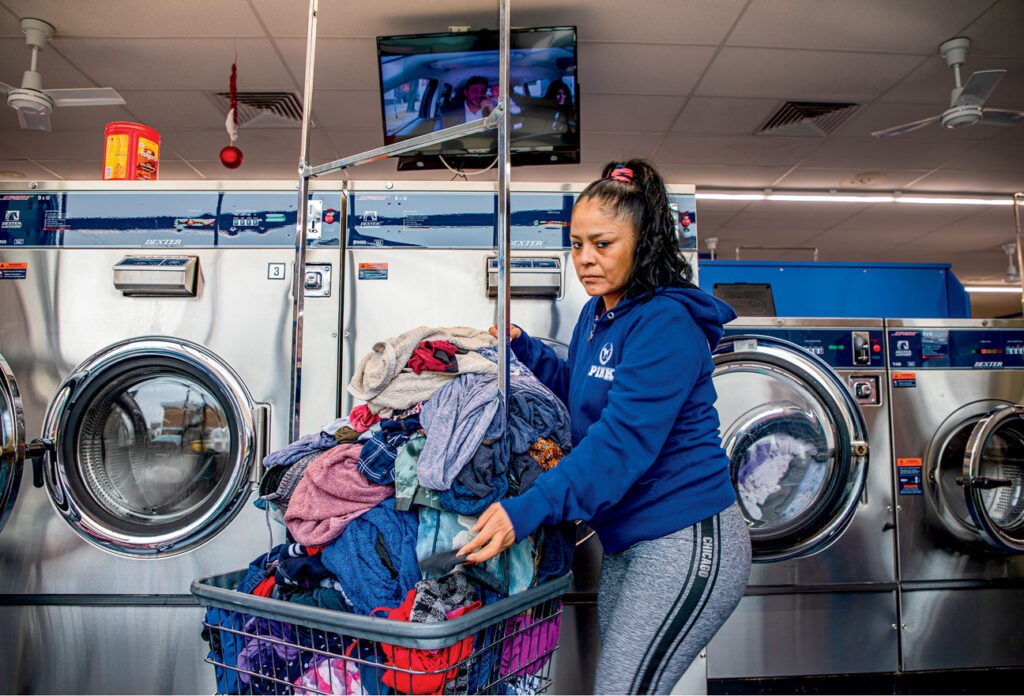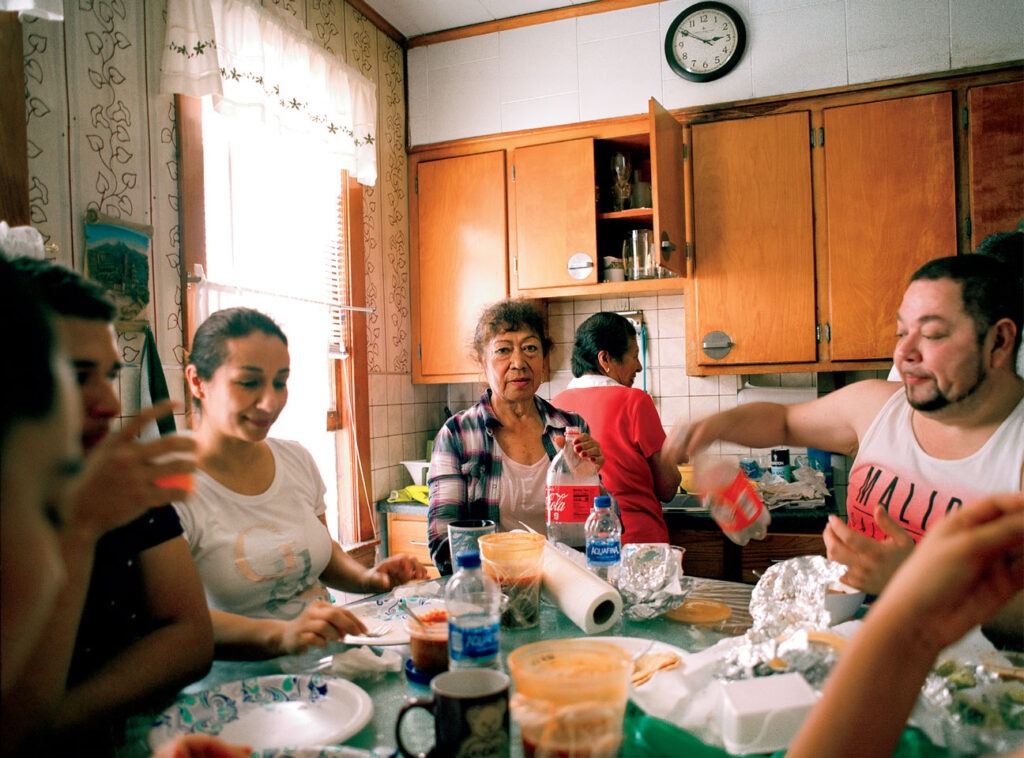While an undergrad at the School of the Art Institute of Chicago, where she earned her BFA in 2020, Jennifer Teresa Villanueva took a large-format photography class for which she began shooting on film with a Toyo four-by-five camera. An unwieldy contraption, it’s not easy to lug on the L, which Villanueva regularly did to and from the six-bedroom house in Belmont Cragin she shared with her parents and paternal grandmother — all three Mexican immigrants — as well as her younger brother and several other relatives.
Returning from school one day, she noticed that her ever-present grandmother wasn’t there. A tough woman with chronic kidney disease, she’d checked into the hospital. “It completely broke my heart,” says Villanueva. “I thought I was going to lose the most important woman in my life.” Not long after, Villanueva began capturing images of the abuelita who’d helped raise her.
Eventually, she also turned her lens (or lenses — she transitioned to a more-portable Mamiya RB67 film camera and to digital) on her factory-worker parents and her brother, who was then in his last years of high school. Even as Villanueva went to grad school at the University of Texas at Austin, then moved to Brooklyn, she kept taking photographs on trips home. “I just felt an instinct,” she says. “I visited the Art Institute all my life and ended up going to the school, and I just felt like I saw no representation of Mexican American families in the U.S., so this grew into something much larger and layered about the complexities of the shared immigrant experience.” Early on, her father bristled at the intrusion. Now? “He’s very proud of how far this project has gone.”
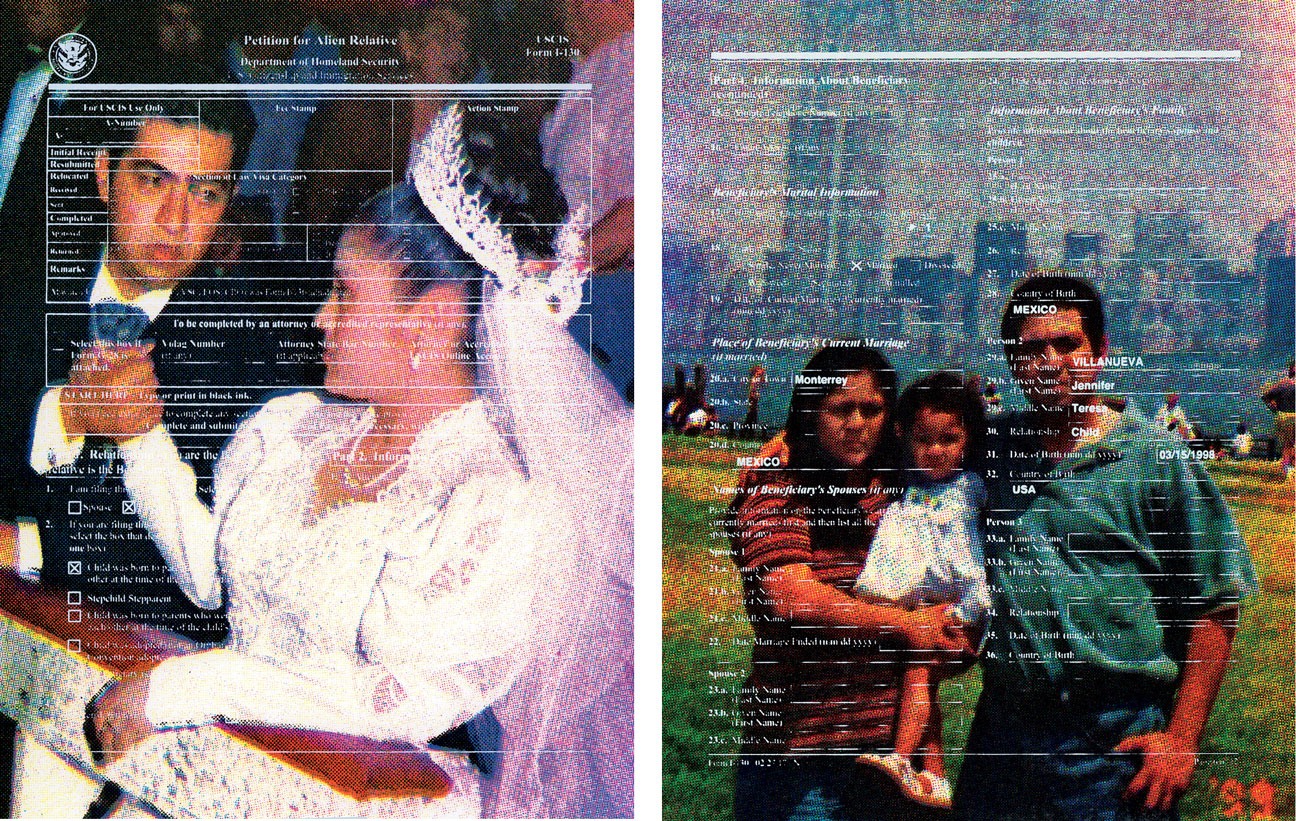
“I made this screen-printing series in grad school,” says Villanueva. “That’s when I had the opportunity to be away from my family and really think about their journey — of them adapting to life in the U.S. while looking back at what they’d left behind in Mexico. I had this idea to use family archives rather than just fine art photographs. That’s an I-130 form, Petition for Alien Relative, overlaid. The left photo is from my parents’ wedding. Every time I’d go to Mexico, my family there was like, ‘After your parents got married, the next day they left for Chicago and never came back.’ They were trying to escape poverty. My dad told me they wanted to bring money back to Mexico to build a home in Monterrey, but they stayed because they knew there would be more opportunity for their children if they were born in the U.S. The image on the right is from when we all went to New York in 1999. You can see the twin towers in the back, which is very chilling.”



